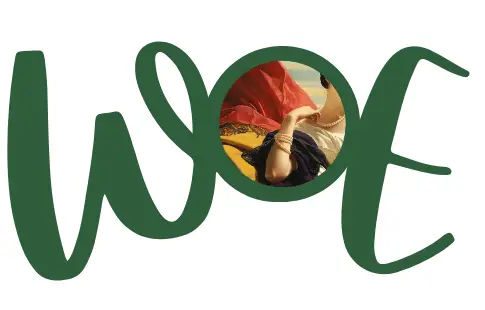October 27, 2023
WoEgypt

In the heart of Egypt’s vast Western Desert lies the enchanting Siwa Oasis, a timeless haven surrounded by endless stretches of golden sands. This oasis stands as a testament to ancient traditions and a unique way of life preserved through the ages.
Echoes of its ancient roots resound through the Temple of the Oracle, once visited by Alexander the Great. The oasis’s unique heritage thrives in the Siwi language, a distinctive Berber dialect, and traditional crafts such as pottery, embroidery, and jewelry.
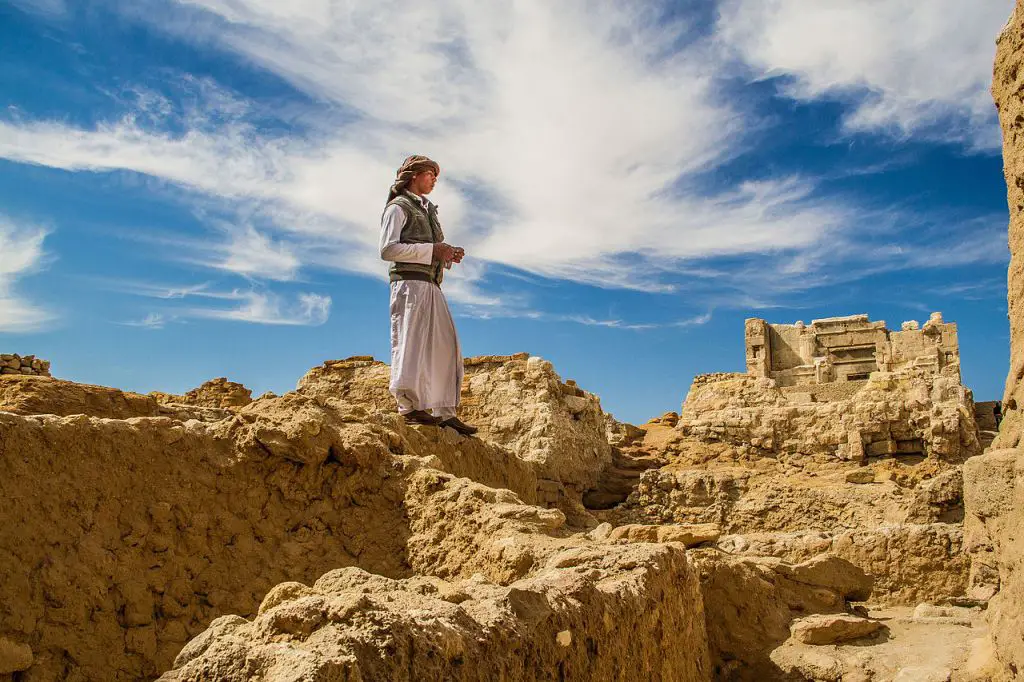
Temple of the Oracle | photo Fares Hafez
Despite the arid surroundings, Siwa thrives agriculturally, thanks to its groundwater resources that support its palm and olive groves. Beyond its historical charm, Siwa boasts natural wonders like salt lakes and sand dunes, inviting travelers to immerse themselves in the rhythmic beauty of the desert.The oasis also invites adventurers to explore ancient ruins, relax in local hot springs, and participate in vibrant festivals.
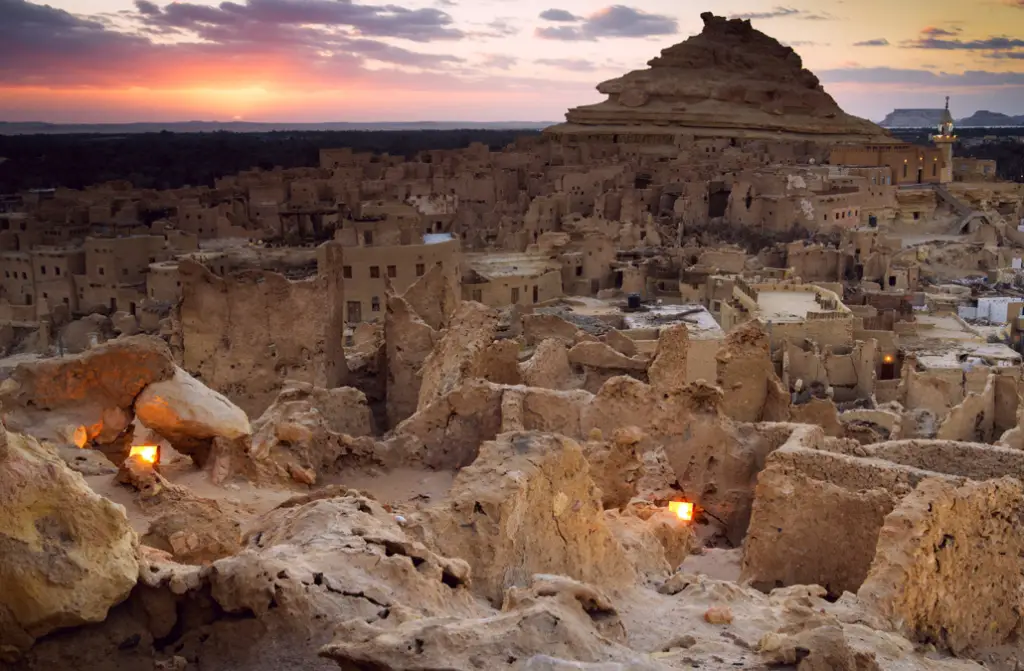
One of the most prominent festivals in the oasis is Eid El Solh, a vibrant celebration showcasing the rich Amazigh traditions of the oasis. During this festival, visitors experience a lively atmosphere filled with traditional music, dance performances, and colorful crafts, immersing themselves in Siwa’s cultural heritage.
Spanning three days around the October full moon, this event draws thousands of Siwans who gather atop Gebel Dakrour (Dakrour Mountain), one of the highest in the area. Here, they celebrate the date harvest, pray, sing Islamic enchantments, renew friendships, and resolve disputes.
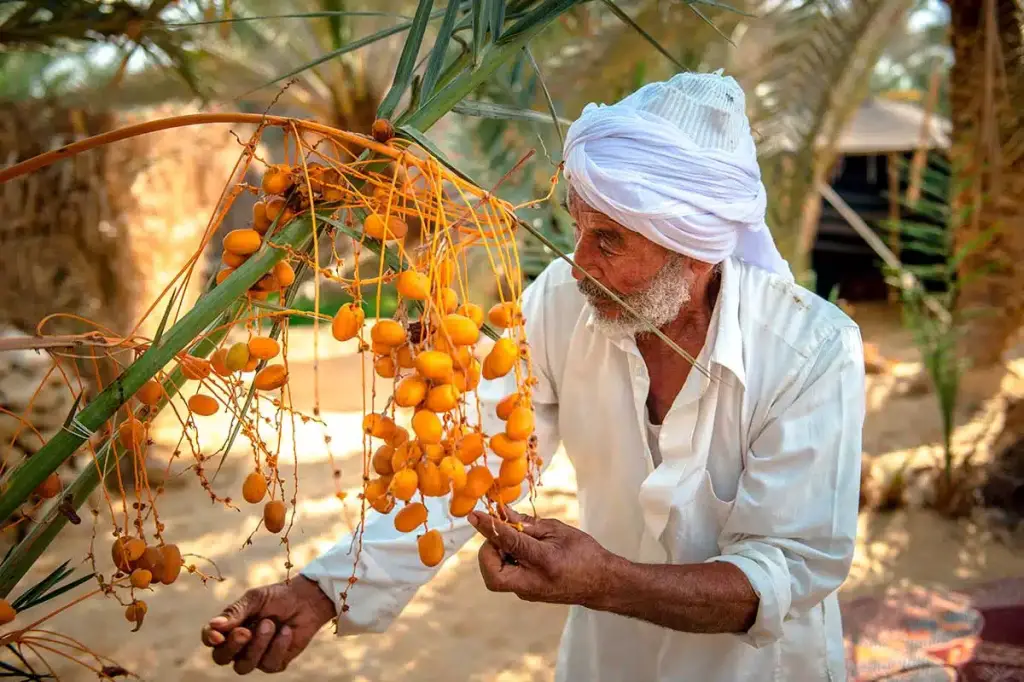
The annual Siwan celebration is known by three names: the “Asyahat” festival in the Amazigh language, the Reconciliation Festival (Eid El Solh), and the Harvest Festival. This festival coincides with the oasis’s most important crop harvests—dates and olives—and is also referred to as the Tourism festival. Here, “tourism” signifies the love of God, akin to Sufism, and resembles rituals in well-known Sufi moulid celebrations in Egypt.

Photo Fadel Dawod
The origin of the Reconciliation festival dates back over 160 years. Siwa was home to tribes of diverse origins, some were of Amazigh origin, while others had Arab roots, leading to intense conflicts and wars, nearly destroying the oasis and its inhabitants. Sheikh Mohamed Hassan Al-Madani Al-Zafir, a wise man and Sufi order founder, emerged as a peacemaker. His idea became an annual sacred celebration, symbolizing unity and peace. Each household contributed bread and money based on their means. Cooks prepared a communal feast, and men and children embarked on a three-day mountain journey, engaging in continuous remembrance of Allah in circular sessions. On the fourth day, they gather around a vast table filled with the traditional dish of ‘Fata,’ the meal prepared collectively by families, combining rice, bread, and meat – ingredients readily available in every household.


Since its inception, the celebration has occurred every year during the three lunar nights of October, becoming a fundamental aspect of Oasis’s cultural legacy. Beneath the vast expanse of Jebel al-Dakrour, Siwans gather. The festival commences with the community ascending the mountain, engaging in remembrance circles, and chanting traditional Siwan songs.
Today, and just like the first festival 160 years ago, on the fourth day, Siwan assemble around a vast table filled with the traditional dish of ‘Fata,’ prepared collectively by families. The celebrations culminate in a grand procession. Carrying flags and chanting prayers and spiritual praises, the procession winds its way from Jebel al-Dakroury through farms and streets, reaching Sidi Suleiman Square near the Grand Mosque in the heart of Siwa city. This marks the conclusion of the festivities, signifying the start of a new year marked not by grudges or hatred, but by love, respect, and reconciliations during the “Reconciliation Feast.” This marks the conclusion of the festivities, signifying the start of a new year marked not by grudges or hatred but by love, respect, and reconciliations during the “Reconciliation Feast.”

Siwan women do not participate in the festivities, but young girls up to approximately the age of 12 are present on the mountain until sunset, and the join in the procession.
Each year, hundreds of non-Siwans, including Egyptians and foreigners, attend this vibrant celebration.
The following photos are from a school parade in Siwa with girls wearing their national costumes to celebrate Eid El Solh | photo © Mohammed Fouad


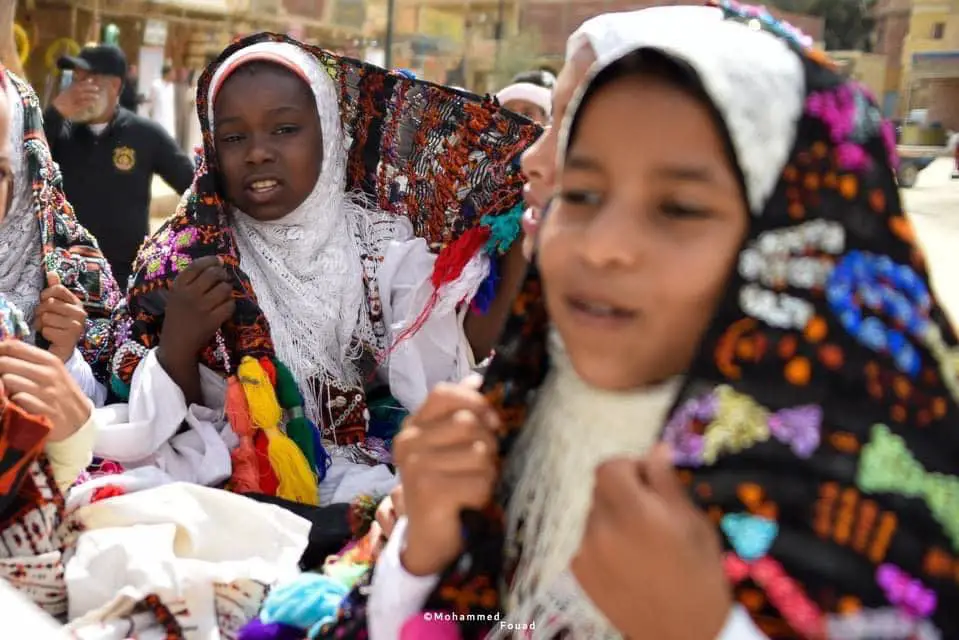



***If you liked this article, don’t forget to subscribe to our newsletter and receive our articles by email
